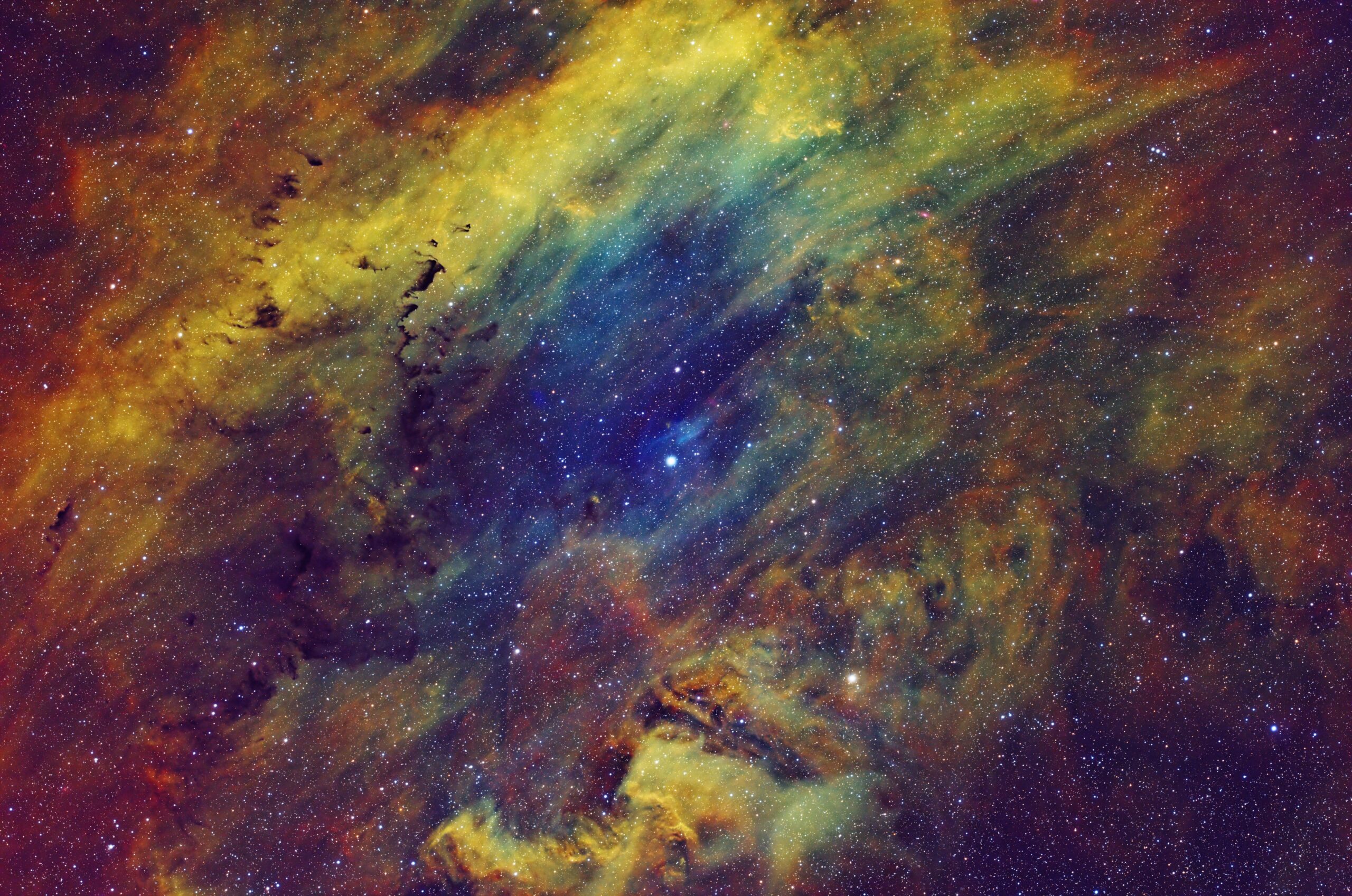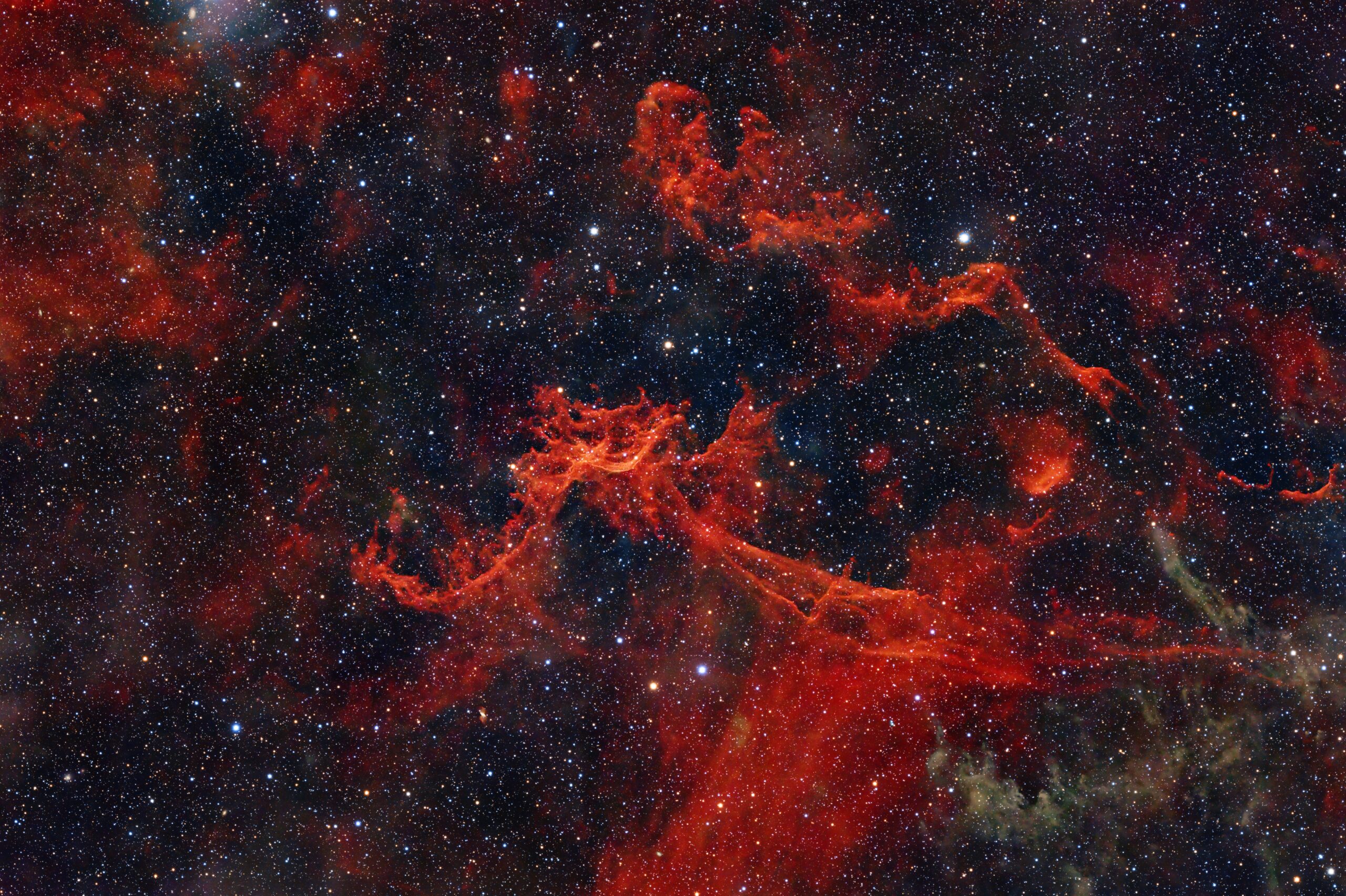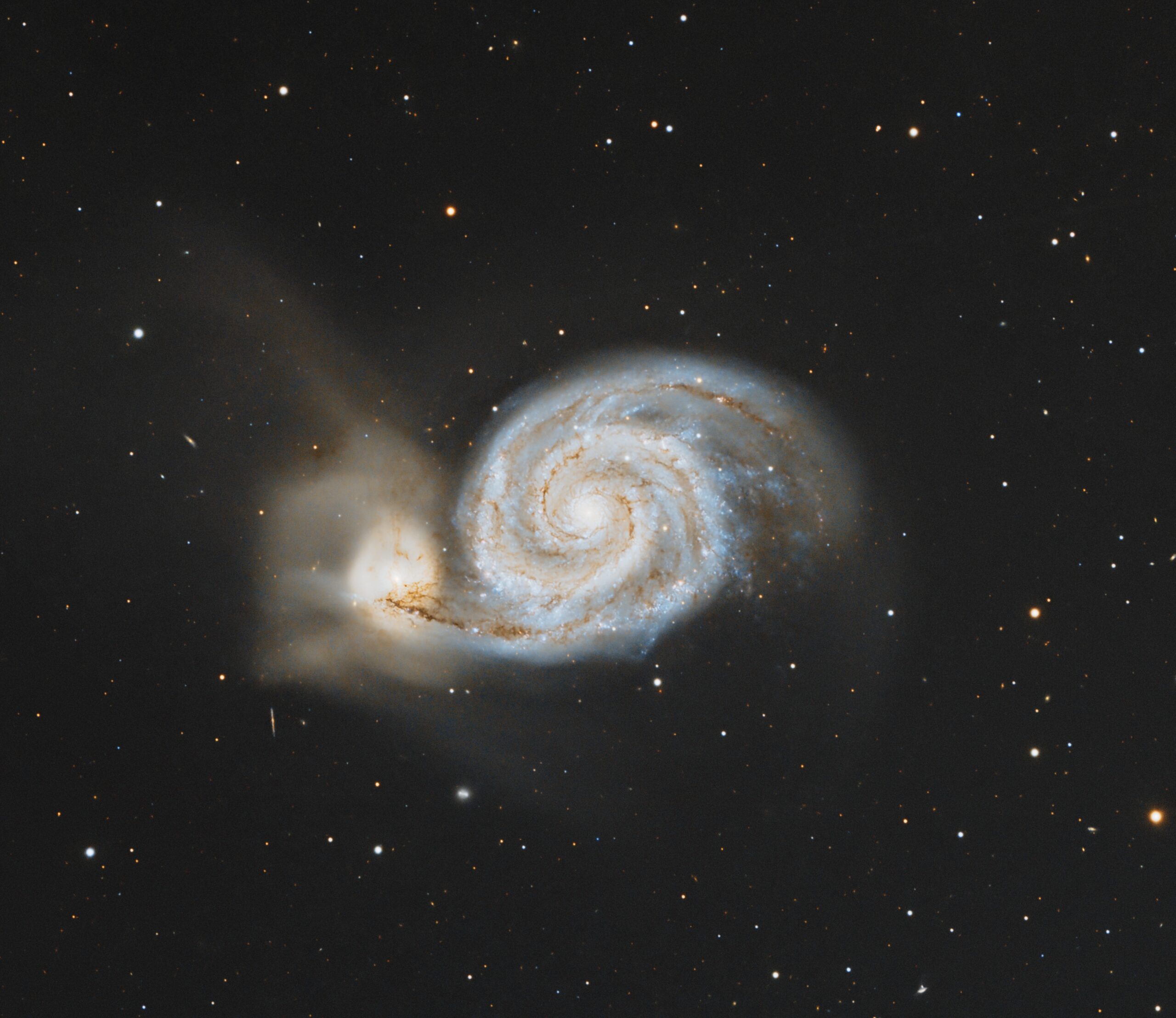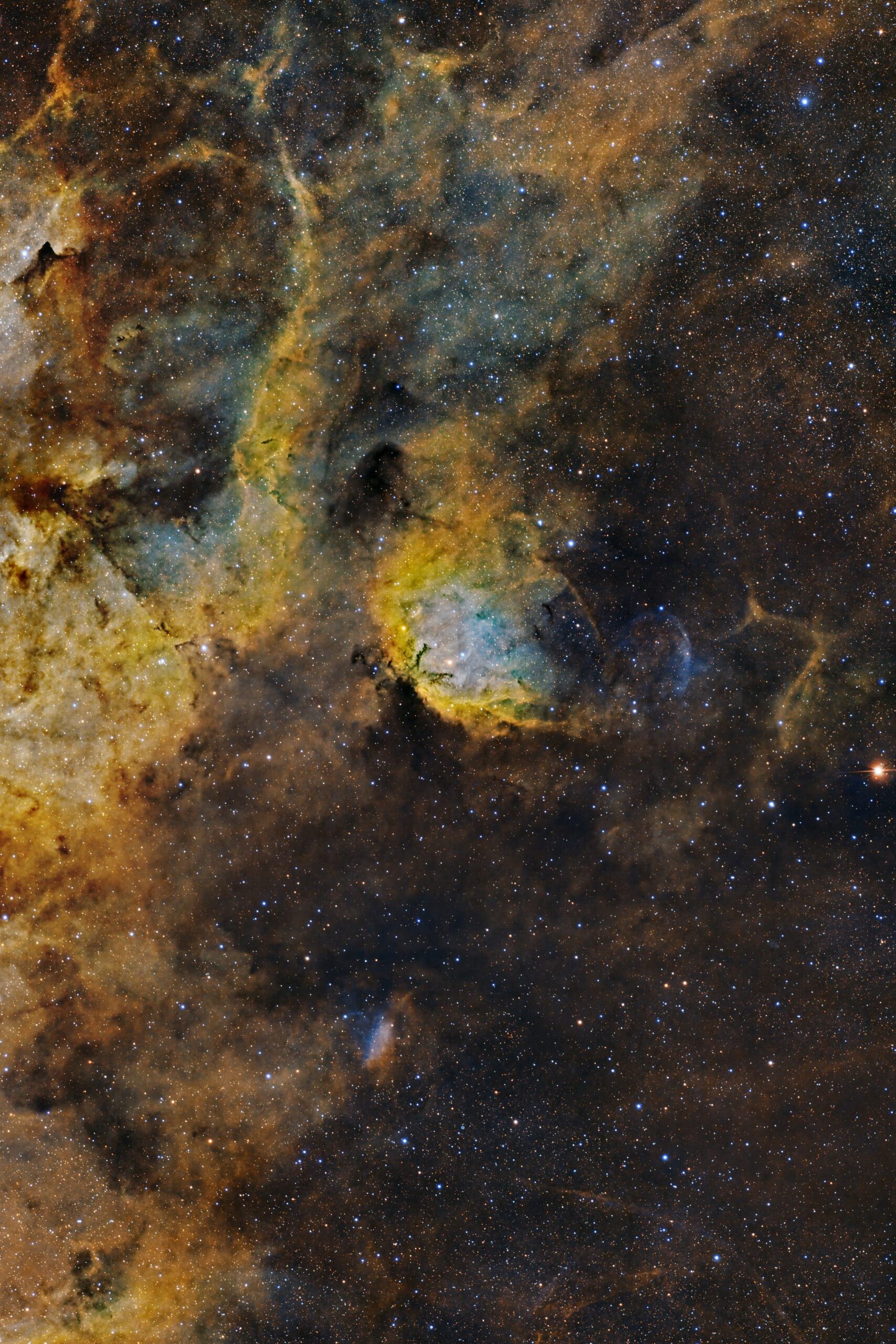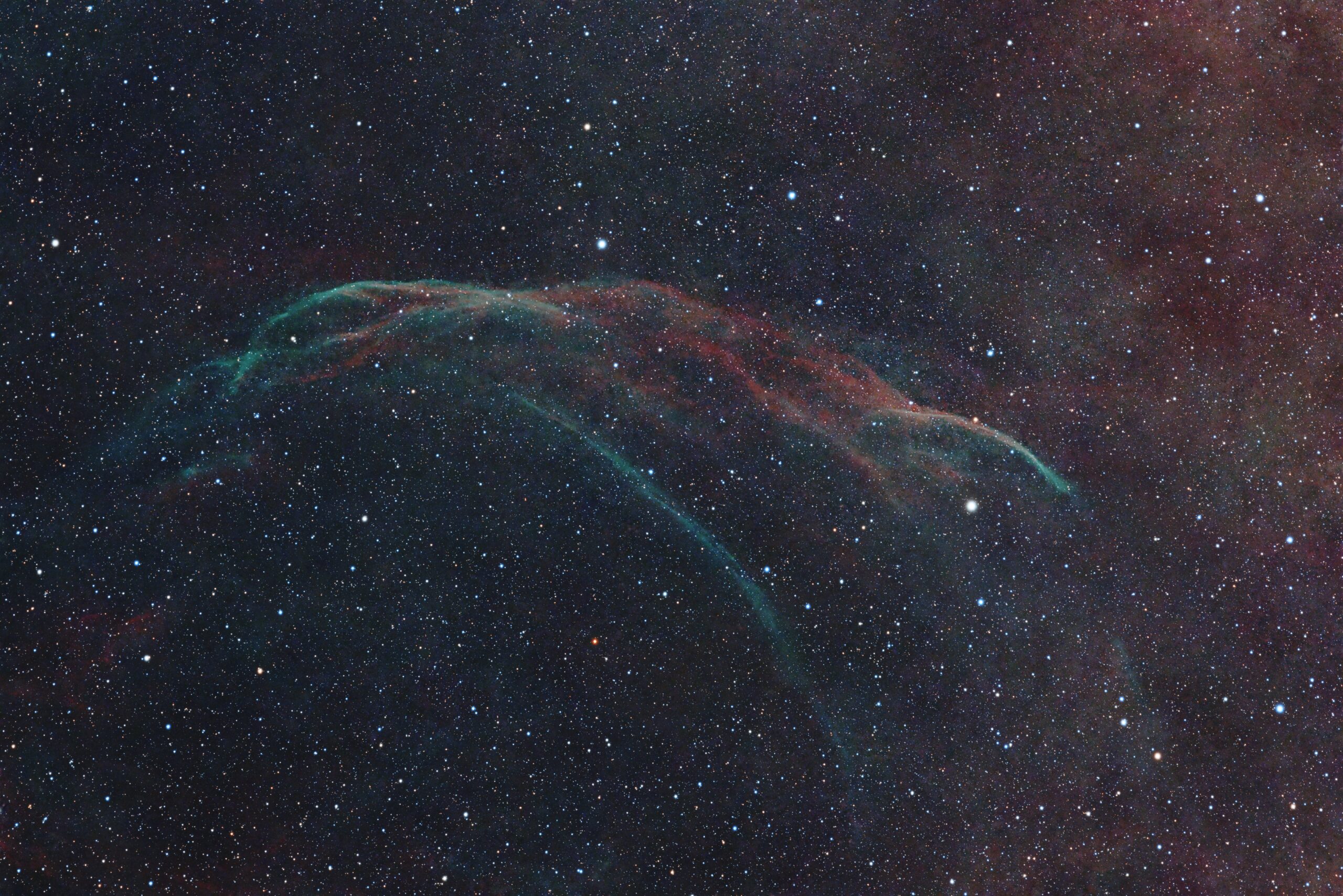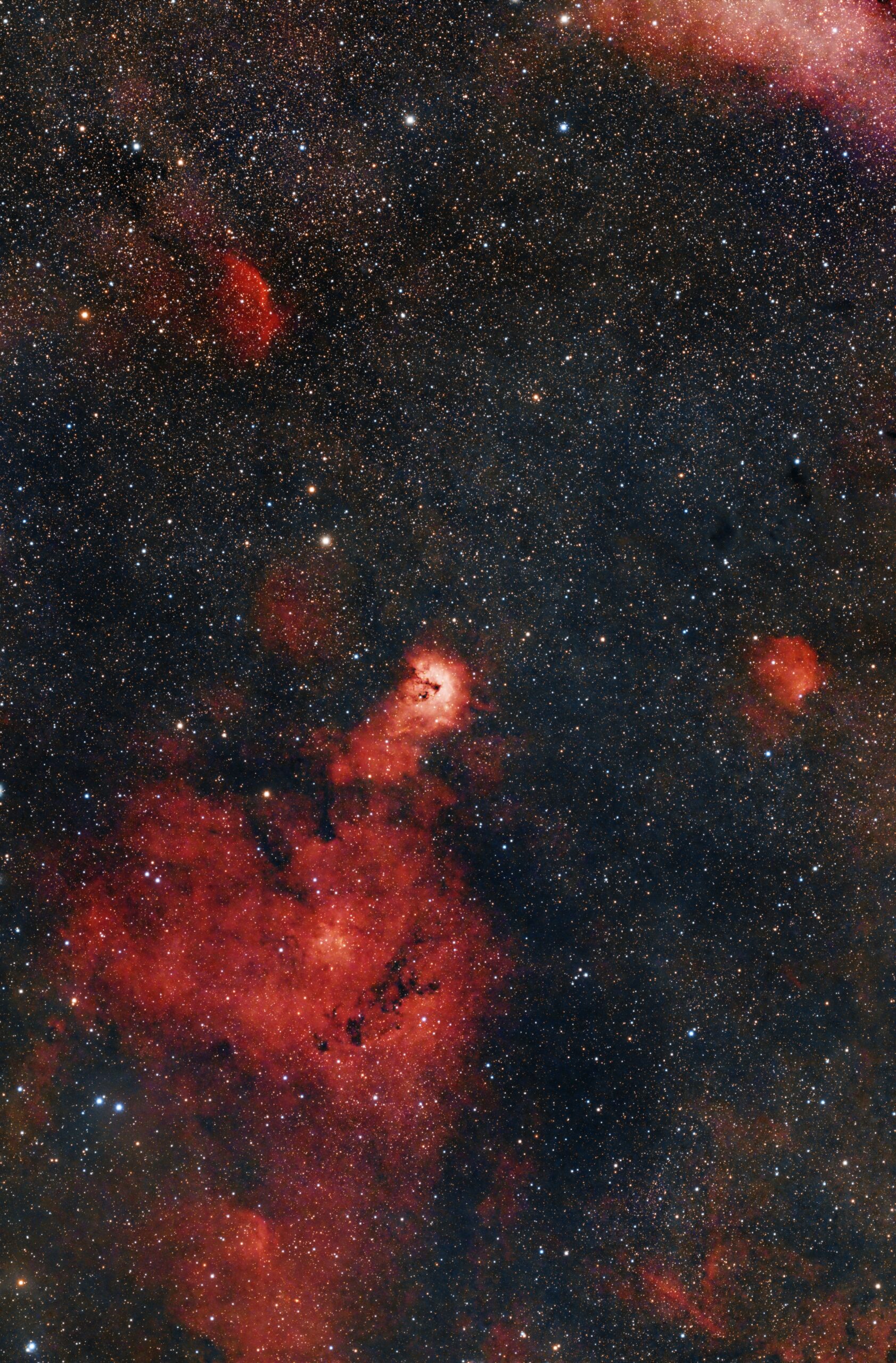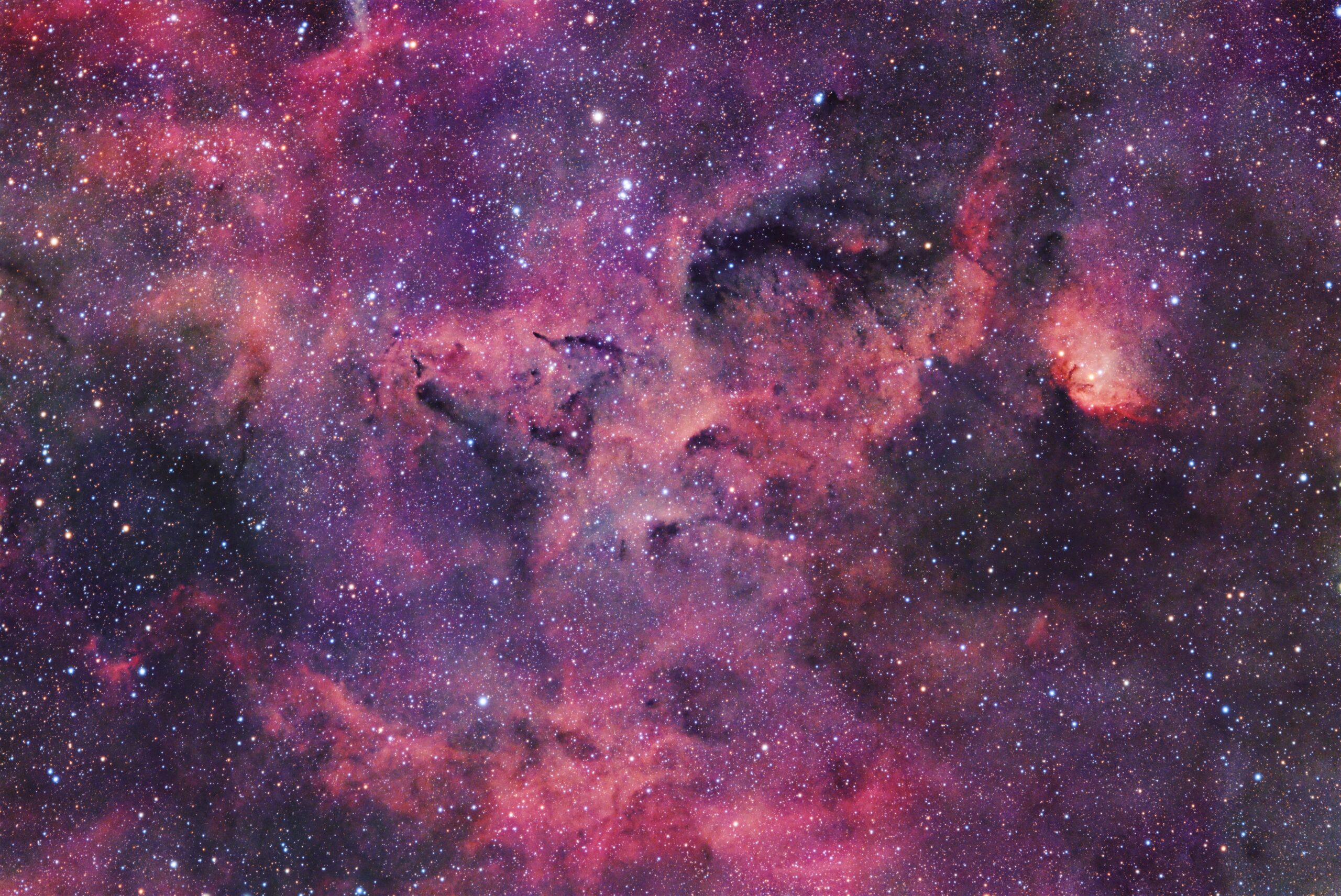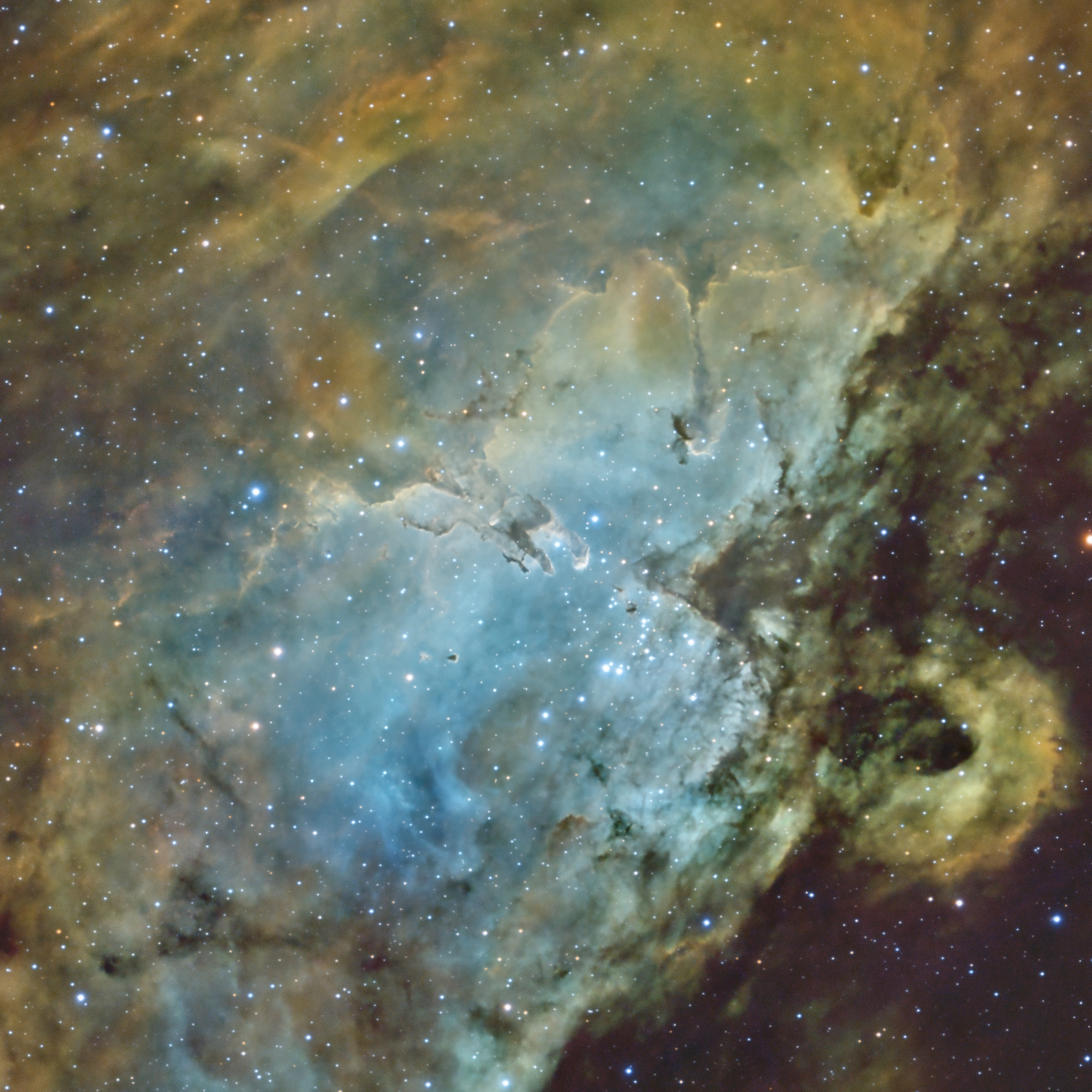 Emission Nebulae
Emission Nebulae
LBN 346, LBN 333
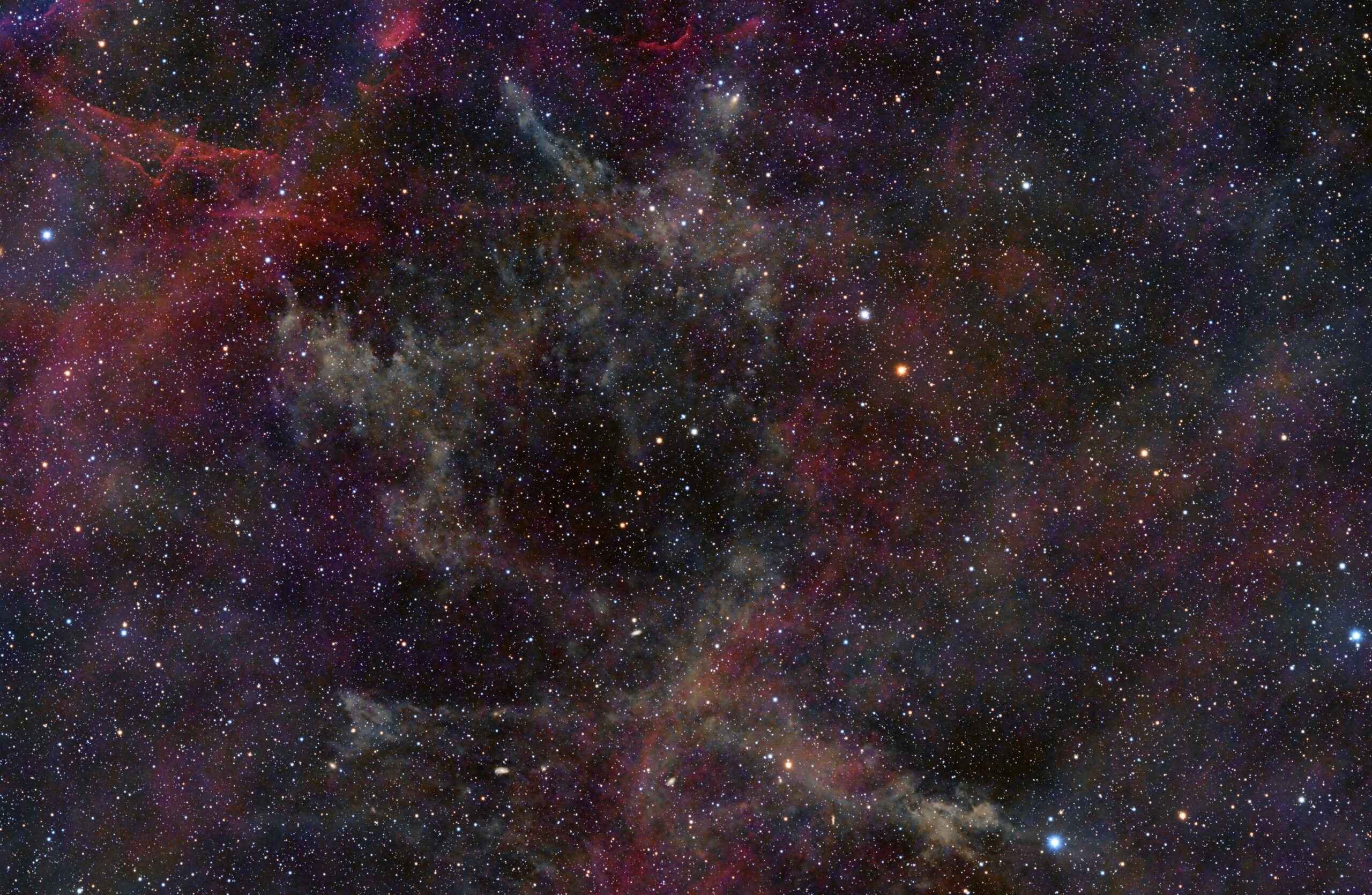
This is a follow-up of my latest post of Sh-114 (The flying dragon nebula). I noticed a very faint reflection nebula in one corner of this image. So I pointed the telescope more to this nebula … and got even more nebulosity.
Read more “LBN 346, LBN 333”